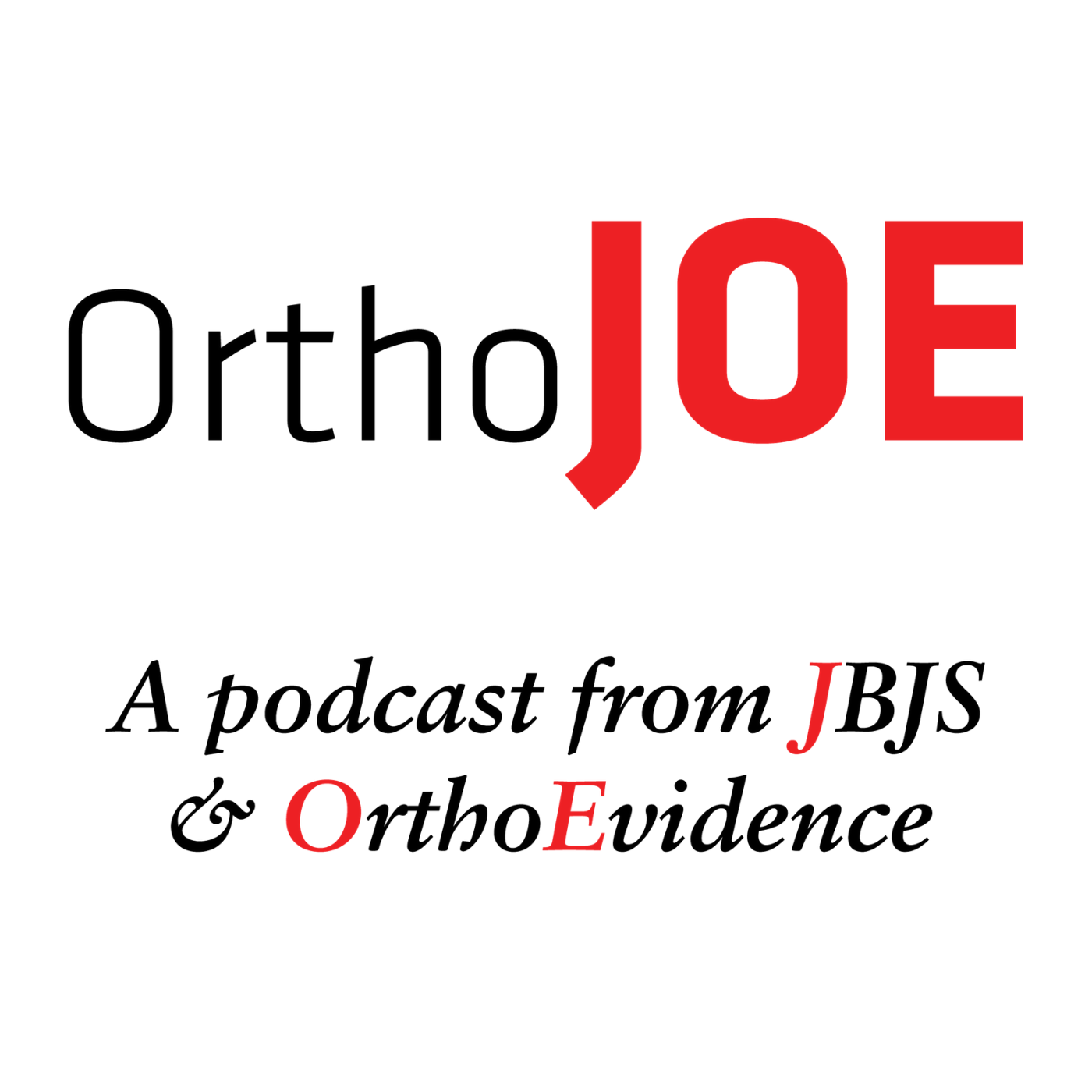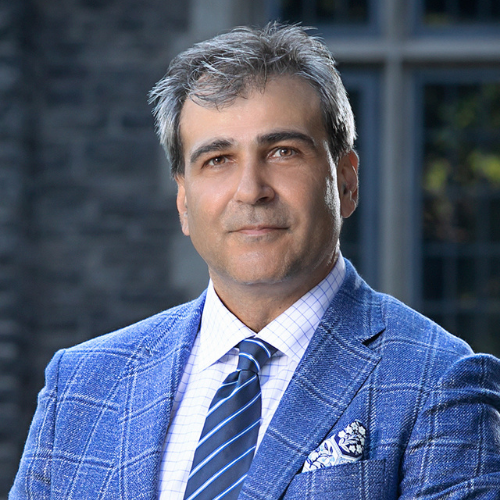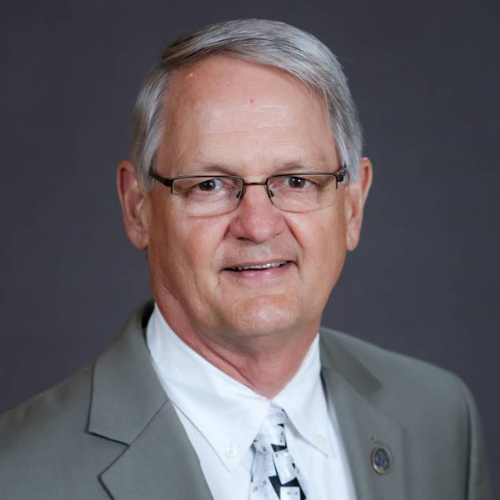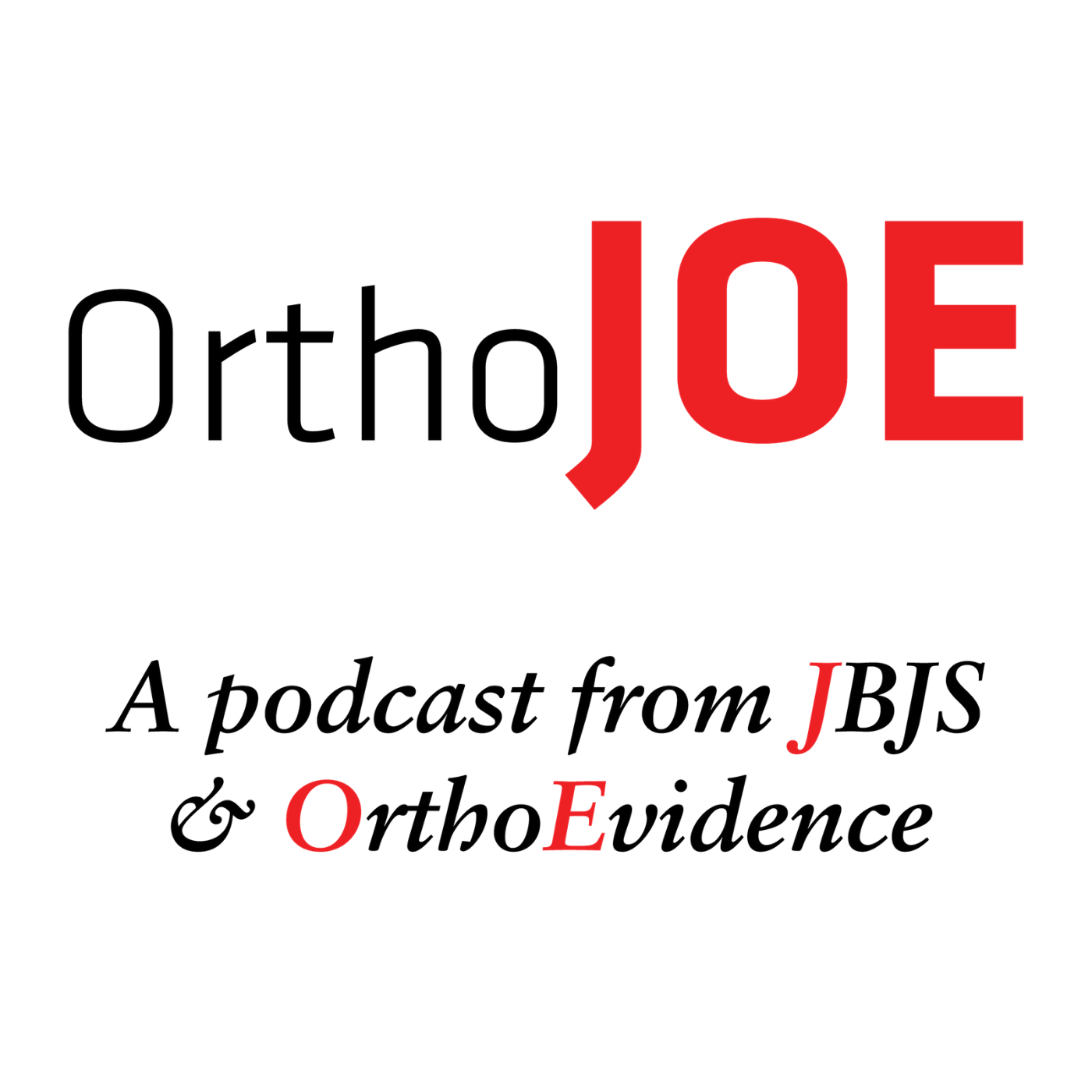Episode Transcript
Speaker 1 00:00:03 Welcome to the ortho Joe show a joint production of the journal of bone and joint surgery and ortho evidence in our world. Orthopedic research is king and current topics from our respective publications are analyzed weekly. Here is Mohit Bhandari from ortho evidence and mark Swin Koski from the journal of bone and joint surgery.
Speaker 0 00:00:25 Okay. Well, good morning mole. It's been a long morning for me. I've already been in the gym, so obviously I got, I got the cup, you know, so, uh,
Speaker 2 00:00:36 I've got my own school cup and Ashish one is coming for you. I promise you that
Speaker 0 00:00:40 Exactly right. That's that's uh, the very lucrative benefit of participating in these high-level discussions is you get an ortho Joe mug. So let me introduce our guests. Uh, uh, Dr. <inaudible> spent a lot of tiles here. This might take most of the, uh, of our time, but, uh, she says the director of the Michigan center for human athletic medicine and performance. He is the Herald and Helen w Gehring professor of orthopedic surgery and chief of sports medicine, and shoulder surgery at the university of Michigan. He's also the head orthopedic surgeon for Michigan athletics, which is that's the square app, right? We're in Minnesota where, where the angle am. Right. But they're both blocking him, I think, but we're the angle. You're the straight, it's the winning ad, mark, the winning. I can't argue with that, uh, given the past two decades, but anyway, uh, to continue on, um, uh, head consultant for the NBA, are you also taking care of the Alliance to issues?
Speaker 0 00:01:41 I just stepped away from it for the first year mark. So former lions doc. Okay. But you're also a consult for many teams in the NFL and NHL. So suffice it to say, uh, a world expert in sports medicine and, uh, Mo and I, uh, we did, uh, any discussion about injectables, uh, and, uh, neither he or I are true experts in this field. So we wanted to find an expert and your name came to the top of the list. So Mo I'm going to hand it off to you and let's delve into the knowledge of this very bright young surgeon.
Speaker 2 00:02:19 Sure. So, uh, she's um, one question that came up, you know, it's, it's come up a lot, right. Is in the area. And I know your expertise is sports, uh, upper extremity area and hip, and, you know, pretty well, you know, you cover the whole body, basically with your knowledge, with respect to the area of sports injury. I recall. Um, and I look back at this around 2010, about 11 years ago, there was this big hoopla around, I guess, the pro football player, Heinz ward who had received PRP. And it led to this relative. I mean, at that time explosion of interest into PRP. And I remember at that point, looking up an article by the editor of the, uh, American journal of sports medicine, who had said, don't call it platelet rich plasma, call it platelet rich panacea. It's being used for everything out there, you know, a lot of skepticism early on, but that could go, but then you hear about tiger woods, Tom Brady.
Speaker 2 00:03:16 Um, I've heard possibly Raphael muddle and even Ronaldo now has that some sort of stem, they call it stem cells. It's the big, huge, you know, um, area of confusion. But the one thing I did want to ask you is you've been doing lots of work on this, uh, and I've seen some of the work you've done related to the NBA. Um, but what fundamentally, uh, should we be really trying to understand about biologics in sports and specifically, um, what are the major players and are we there yet, uh, with respect to these, uh, you know, various options for us, I know PRP comes to the top, but that doesn't mean there aren't others that play.
Speaker 3 00:03:58 Yeah. Those are really great questions, Moe, and I'll take one step at first, thanks for it to you and mark for having me. And secondly, I think our mark is an important point to share, you know, you kindly referred to me as an expert in this area. And the reality is I think one step back from that is probably none of us are. I think it's truly the area that's evolving the most in orthopedics and we're learning all of us are learning in real time. So I think the expertise changes, you know, what I would share motive to point on it and you hit it very well is the hardest area. I think about workflow biologics, in my opinion, is always maintaining your integrity to separate the perception and the promotion, if you will, from the science. And that's a critical area because in sports medicine, by nature, what brings stem cells or PRP or ortho biologics to the forefront is often the famous athlete who utilizes it.
Speaker 3 00:04:54 And as, as you know, better than anyone you've taught me, you know, that falls somewhere below level five evidence, uh, if that exists and what we really should be making our decisions by is what's truly in the journal published by you and mark and others, right? The level one and level two evidence. But at the same time, you don't want to be the cynic who says, well, none of that works. It is platelet rich panacea, if you will, and then you throw away all of the opportunities that do come with them. So I guess answer your later question. Well, we're far from there yet, but have we made advances since, you know, Heinz award used it from MCL sprain on the sideline? I think we have, and I think we're starting to recognize more that there are absolutely roles and areas to apply biologics, but each year as we do better quality trials, better quality bench, top to bedside work, we're refining our indications a bit.
Speaker 3 00:05:47 You know, the danger is the one size fits all, you know, platelet rich plasma, for example, has some very good level, two evidence to work. For example, for patellar tendonitis, like you mentioned for Rafa and a doll or elbow tendonitis, or even in the situation of osteoarthritis of the knee, where it now has been shown to have every bit of the effect fussy and maybe even better longevity than corticosteroids, but as you know, most of the danger becomes that those indications dangerously start to, uh, to migrate, to use it for anything and potentially everything. And then to provide promises of regeneration of tissue or, you know, favorable restoration of tissue, which might be different than for example, pain relief or the PR an anti-inflammatory or a pro-inflammatory response that may be very different than tissue regeneration. So I think, you know, always continuing to push the limits on knowing where the, where the indications are, but defining those by evidence is the key and making sure that we don't over promote, you know, for, for me, the area of stem cells is probably more so the hot button then than platelet rich plasma, because that is an area where it offers tremendous promise to the patient population can sometimes prey on hope for us to avoid the dreaded hip replacement or knee replacement.
Speaker 3 00:07:07 But the reality is in 2021, am I aware of any level one or two evidence that suggests stem cells allow for restoration of cartilage and avoidance of end-stage arthritis? I'm not, I do think the promise exists as we continue to push the envelope, but, you know, there are financial conflicts out there that sometimes push us to offer these treatments when we don't quite have the science.
Speaker 0 00:07:30 Yeah, she can I just jump in here? Can you update our audience, uh, on, uh, the regulatory, uh, issues that surround, uh, these two, uh, biologic interventions?
Speaker 3 00:07:41 Yeah, very, very much so, uh, mark, as you're aware, um, the FDA tightly regulates the use of orthobiologics in general and in particular, when it comes to stem cells, um, in the United States, those need to be quote unquote, minimum, minimally manipulated. And that's an important distinguishing point from using stem cells, for example, abroad, um, where maybe those regulations don't exist. So for example, if you were to take bone marrow aspirate today, or to use lipid based stem cells, that they, they would need to come out of the body, they can then be minimally manipulated. They cannot be cultured. Um, you cannot increase them in quantity. Um, and then, and then they need to be placed back in the patient, um, to, uh, adhere to our principles of safety. And there's lots of experts in the stem cell world far greater than I, that will share why we don't want that the risk of, for example, tumorous progression of a stem cell or ill-advised application in the wrong environment.
Speaker 3 00:08:38 Now abroad mark, those regulations are different. You know, they may in fact be able to be derived from other types of tissues. For example, embryonic tissue. They can sometimes be cultured up to reach a critical number. Some have referred to 10 to the sixth number of cells or beyond offering some potential. But it's very, very important that to your point that we distinguish those because it's across the board in orthobiologics mark, that we use these terms broadly, you know, for example, platelet rich plasma, I'll pick on that. One is all PRP the same. It's not have leukocyte rich and leukocyte poor PRP. We can have platelets concentrated to a variable level. We can have PRP activated or not activated. We can be delivering PRP with a scaffold or without a scaffold. And similarly, when we refer to that, um, for stem cells, you know, we often refer to bone marrow aspirate as a stem cell injection, but we know from good work from Scott rodeo and others, that may be one out of every 10,000 of those cells is a stem cell.
Speaker 3 00:09:41 So in fact, how are we comparing across clinical trials when what we're using is heterogeneous and then the environment in which we're using it, you know, injecting it into a muscle or a tendon bone interface or a attendant is different. So one thing that we have to do really well and probably learned from Dr. Bhandari is you're only as good as your studies. And so in sports medicine, I would like to hold myself, but also our colleagues to a higher level of credibility that we need to have trials that have uniformity in the application, but also uniformity in the type of ortho biologic we're delivering, you know, uh, <inaudible> product. I think in the journal published a very good with important point of the so-called minnow, uh, alignment of the Meebo criteria, which is the minimal information that we need to provide when we're delivering an ortho biologic, which speaks to these issues, how many styles was it activated? What was the source? So we're talking about apples and apples.
Speaker 0 00:10:39 That's been a really, really important requirement that we've applied at the journalist as the details of how the material is handled, prepared and delivered have to be there before we'll consider, uh, publishing a manuscript. So, sorry I interrupted Mo
Speaker 2 00:10:53 No, no. I mean, I just to go further, I think, you know, um, there was a statement that I recall that really sort of rang true in my reading, you know, what's been happening and it's kind of, it's fairly intuitive, but I'll read it out to you, uh, association. I wouldn't mind getting from you your thoughts on if we were to design what we would call a high quality study, what would that look like broadly? But, you know, the issue is the nomenclature of PRP products is notoriously confusing. And actually, because it's so confusing, it's hindered research efforts and the challenge is no matter what you do, it always seems that there's another opportunity to say, well, you know, that's too narrow or that's not broad enough. Um, you haven't standardized enough. Um, how do we actually get to getting better evidence, even though I do know, and I suspect you're aware too, there have been hundreds of randomized trials, albeit small ones, um, that have been conducted in the area of PRP across the whole panacea of different indications.
Speaker 3 00:11:54 Yeah. Wonderful question. Well, and I suppose to answer that it depends a little on the application, right? Which has been one of the challenges because we have been so broad, but maybe I'll pick on one, for example, you know, we will often hear about application of PRP for the muscle strain injury, the hamstring strain, or the quads frame. And then we hear about why are we applying that mole? And everybody may have a different goal, a sports surgeon like me and sees season may say, well, boy, might that reduce the morbidity from six weeks to four weeks or three weeks? Whereas somebody a more purist may say, well, is it really about that? Or is it about getting favorable healing to minimize the risk of recurrence and to maximize muscle strength and recovery? So I guess I would start malware for us before we even think about the formulation of PRP.
Speaker 3 00:12:42 Let's take a step back to make sure that we've designed the study the right way by, by homogeneity. So I'll pick on the hamstring strain because I'm involved in a study right now where when you look at many of the studies that are published, we report them as strains. But as you and I know, um, strains mean a lot of things, you know, they can be Mid-Valley strains, proximal or distal myotendinous strains. In fact, we did a study that shows if you were to take four radiologists and say grade these strains on MRI imaging, uh, by, uh, by a well published bam MC criteria, uh, there's not even great inter observer reliability when imaging is present. So I think the first step Mo is we have to pick a problem where we can identify with clarity that we're all talking about the same condition. These are all MRI proven grade two strains in this location.
Speaker 3 00:13:32 Step one, step two is I think then we need to have clarity in our hypothesis. Is the hypothesis about expedited return to play like Hines ward? Or is it about better healing of the tissue or, you know, a regeneration of tissue. And those are going to have totally different outcome measures. And you speak about this really well. So I'll steal your own words, right? Which is we're only as good as what we measure. And so sometimes if you want to prove that PRP works, you measure a patient reported outcome, like pain relief or something that really isn't sensitive enough to pick up whether we use PRP or a placebo or corticosteroid. So we need to choose the measure in the study. That's getting to our goal. If it's favorable healing, it might be imaging or a tissue biopsy, but if it's truly expedited return to play, then that's a different criteria.
Speaker 3 00:14:20 And then I think it actually becomes much easier mole because if we ask the right question with the right outcome measures and choose a standardized patient population, then I don't think it much matters which PRP formulation we use or which stem cell formulation we use that becomes easier to then look at those specific variables. If it's leukocyte rich or poor platelet rich or bore, or if it's bone marrow derived or lipid derived stem cells. The problem is we have all those variables that we want to look at in the biologic, but we start with the study design that introduces 10 other confounding barriers.
Speaker 2 00:14:54 That's exactly right. Yeah. And it's interesting because you know, back back, you know, let's, let's say 10 years ago, or even five years ago start seeing everybody was talking and we're using PRP is one of our focus topics today. But you know, there were hundreds and hundreds of different seem to be preparations and everybody you'd speak with would say they don't do it the way I do. So my results are actually pretty good. And so there was never a control. The control is basically I do something a little bit differently and my patients seem to really respond to it. So you're having these huge spikes of interest in popularity across hundreds of different formulations. And then you start getting into the small trial, some show benefits, some don't show benefits, some show, a big benefit, but on average take, let's say even a Neo way, right?
Speaker 2 00:15:39 It wasn't intuitive that it would work in Neo way to be, you know, at the time. But I said, oh, okay, why what's happening here? But the average treatment effect for PFP across all the different trials, maybe six or seven at that time, the average effect was really high. But the problem was, it was so variable. You could go anywhere from my having a miraculous effect to almost no effect, whereas sort of the tried and true corticosteroids, they were less effective, but they were much more stable. You kind of knew what you were going to get. And I remember thinking to myself, there's probably something here it's just so much variability once it's gets figured out over time. You know, it probably has a role. And you've seen recently with the American academy just coming out in August, you know, upgrading PRP, I think they say platelet rich plasma may or may now reduce pain and improve function in patients with symptomatic all way of the knee. That is a big change, um, from, you know, five years ago. So there has been some narrowing of indications of that. And I suspect, um, you probably know, maybe I'll ask you a very pointed question, do you believe, and I think I know the answer, uh, that PRP does have a role in the management of patients in 2021.
Speaker 3 00:16:48 Yeah. Great points you made. And I'll answer that. I think in a very straightforward way, I think it absolutely does. And that probably is a difference than, um, than maybe where we were 15 or 20 years ago, which does speak to the fact that we are moving in the right direction. I think there's no question it has a role. And it's probably a facet of, I do feel in 2021, every orthopedic surgeons practice, you know, there is that patient population where we don't have a wonderful surgical indication and we're looking for a treatment option to offer that patient short of palliation. Now the danger mode to your point is, is that a good indication that we're, that we're indicating that patient four, four, or is it an indication because it is a seemingly benign intervention that isn't surgical that offers us an option for that patient.
Speaker 3 00:17:36 That is another question that needs to be dissected because sometimes these procedures gain traction because they're favorable for the patient to hear that it's something pro healing pro biology it's favorable for us because we lack another tool in the toolbox, but that's different than being an effective treatment. And so, but to your point, I think it absolutely has the role, one other comment to make related to that Moe and mark. And I'd love your take on this is I think another challenge for us and we've gotten better in 2021 is I think in general, orthopedic surgeons have not had myself included really the intimate level understanding of biology and the way we should, right. We have some sense of, you know, what happens at a healing and thesis or an attendant or in a muscle, but in terms of what the fundamental principles are, we don't, we have recently done a small survey study asking surgeons, you know, what do they think happens when you deliver a stem cell, you know, into a foreign environment.
Speaker 3 00:18:32 If I injected a stem cell into a muscle, and I think even among sophisticated people like, like ourselves who have, who have a medical education, you would be surprised that many believe that that stem cell could potentially incorporate and become part of the healing environment. And the predominant thought among card-carrying PhDs who understand this work would say not at all, you know, a single cell that's injected into a foreign environment, likely dies in a short period of time without a scaffold and a, and an environment to heal. And in fact, if stem cells work, they work via secret homes, right? Via para or an effect on the tissue, sort of like you're delivering a local endogenous, PA RP. And I think all of that creates this additional disconnect, which is we as providers don't truly understand it. Patients certainly like the idea of stem cell and healing and regeneration of tissue. So there's a natural momentum in the market for us to move that direction. And I think our jobs as responsible providers is to push the limit because there is something there we don't want to cast a net and say, all of this is fog wash, but to do it in a way that actually is moving us forward. And doesn't set us back by virtue of saying all of this is just a financial opportunity and little else.
Speaker 0 00:19:46 Yeah. That's well stated that she sent, you know, Mo you and I have been advocates of large, simple trials for forever. And I'm not sure that this is an area where a large, simple trial is even wise if it were feasible.
Speaker 2 00:20:01 And I guess it gets back to, and you know, I'm always smile. Cause anytime you speak, uh, and you have the privilege of speaking, I chat with you all the time. Marxel I'm being abused. But also with the sheesh, when you speak with scholars, like people who really think about a problem, you rarely end a conversation with answers. You end the conversation with a lot more questions. That's basically what's happening, right? There's so many more questions and insights. I think that, um, and nuances that we have to think about anywhere from understanding the biology and going forward and saying, well, you know what works in a lab, therefore we should just try it. And it probably works clinically, but I think Ashish, what happens all a lot of times is for many practicing surgeons, is I'm seeing an effect. I've seen my patients happy, figure out why it's working.
Speaker 2 00:20:47 Like tell me, you know, go backwards and say, why is this working? You know, it's like, I don't understand it. And I think there's, you know, there's both sides of that, of that story, but both sides, um, at the fundamental level and the clinical level in terms of research, have a huge responsibility, uh, for ensuring that we aren't, you know, over propagating something that has no utility or potentially could actually be harmful. I don't think that's the case, um, with some more discussions, but I do think it makes us all take a pause. I look back and say, you know, uh, how do we all continue these discussions, uh, get as many viewpoints as we can, and ultimately try to slowly plod forward in this world. That is evidence-based orthopedics.
Speaker 3 00:21:32 I totally agree. Mo and I guess leaving, leaving a little bit on a point of optimism is what a wonderful opportunity I can say this as a sports surgeon to, to, uh, incredibly capable of trauma surgeons is a, you know, there's been a lot of areas where you guys have done such great work to, you know, your, your criteria for an outcome is very objective. You know, a fracture or a non-union either heals or it doesn't heal. And you have objective ways of demonstrating that on x-ray and CT as a sports surgeon. Um, dare I say it right. A lot of our times our structural outcomes have a gap between our functional outcomes. You know, a lot of rotator cuffs don't heal. You know, a lot of times we get something to heal, but the muscle remains atrophied. So I view that most sort of in an optimistic way, what an opportunity, because biologics will be what will likely change that. It probably won't be the next best suture anchor. It probably won't be a few more suture configurations. So I do think what your point that you left it with tons of questions, but tremendous opportunity, because how great would it be in 20 years? If I said large to massive rotator cuff tears, didn't have a north of 50% failure rate and fatty atrophy of the cuff, wasn't irreversible, those are reversible. And now we understand those are the well indicated applications for stem cells, not just a broad application anywhere and everywhere.
Speaker 2 00:22:51 Yeah. I was gonna say mark, mark, I'm just happy that, uh, sheesh thinks that orthopedic surgeons and trauma can agree on a non-union. I just didn't think that was a possible thing. Well, I don't know what you're getting now.
Speaker 0 00:23:05 Sure. Definitely. Depth of knowledge, a difference there anyway, uh, she shot low and I had really hoped that you would be able to bring us up to date as to where we are. And I know, uh, that even though we haven't discussed that, that you're, you're up to planning such trials or are involved in such trials that are gonna help to, uh, further elucidate what the real role of PRP and stem cells are. And we want to thank you for spending time with us, between cases. Thank you for arranging your schedule and your ortho. Joel, a coffee and Barb will be in the mail. Um,
Speaker 3 00:23:41 Thank you guys. Thank you guys. I would have done it for the good company without the mug alone. So appreciate the opportunity. It's always fun to hang out with you guys. Awesome. You guys too. It's toxic.





